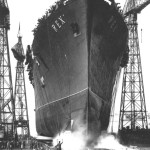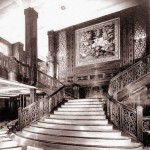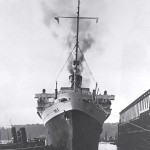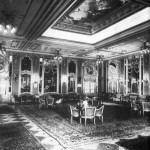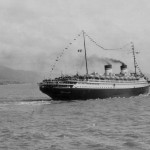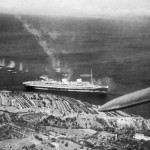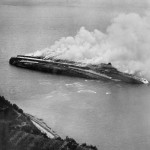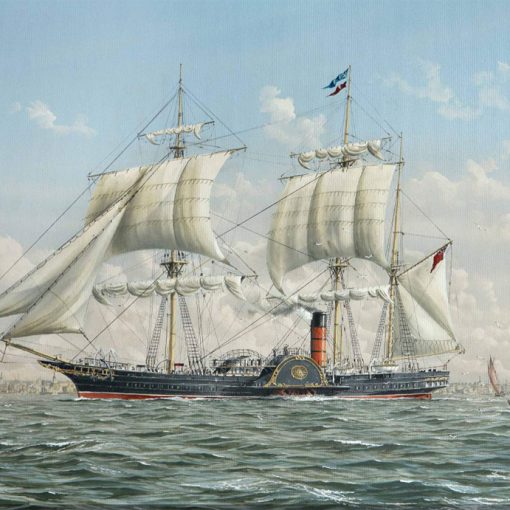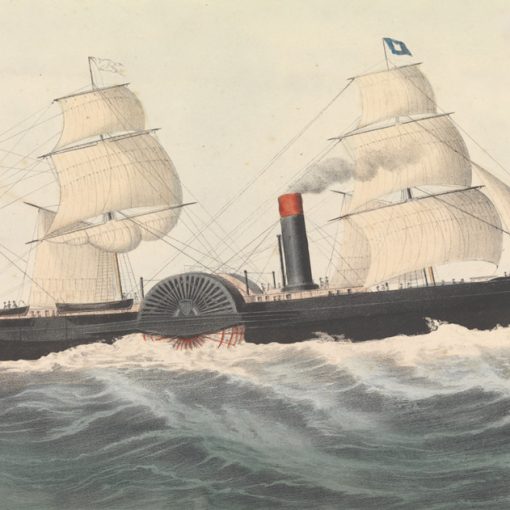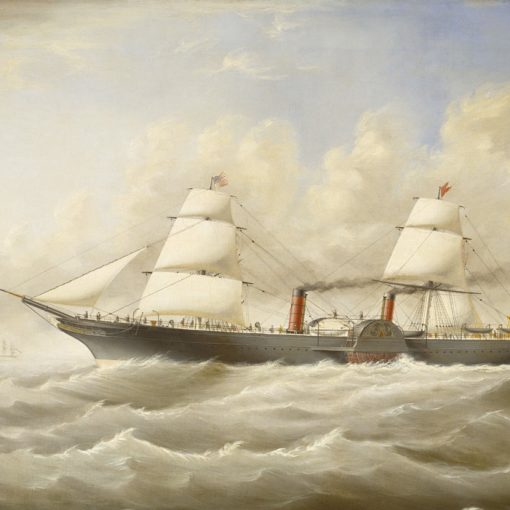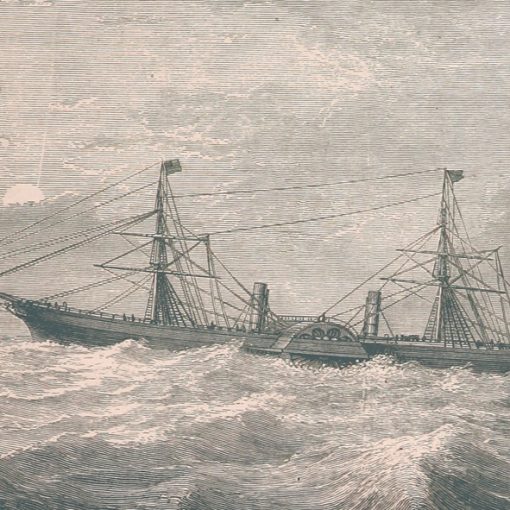1932 – 1944
Both Germany and Italy suffered from dictator leadership in the 1930s. In Germany Adolf Hitler and his Nazis ruled ruthlessly, and in Italy Benito Mussolini – Hitler’s allied – led the country in a Fascist regime. Mussolini wanted his country to be Germany’s equal, and this meant that he envied the superb merchant fleet the Germans had been able to boast since the 19th century. For the time being the Germans possessed the Blue Riband of the Atlantic with their two speed-champions Bremen and Europa. But Mussolini desired to be even better than his gracious allies.
Before Italy decided to build a liner to outmatch every earlier master of speed, they had not been particularly interesting in a transatlantic passengers’ eyes. Cunard, White Star, Norddeutscher Lloyd and the Hamburg-Amerika Line represented the passenger’s requirements. The largest vessel constructed for Italy was the 32,000-tonner Augustus from 1928. In order to place Italy in the world as a prime nation – not only in the merchant fleet world – Mussolini merged the three existing Italian shipping companies and formed a new, strong one – the Italia Line. With the new powerful company, the dimensions of the new vessel were decided to be immense, just as the speed would be.
In the early thirties an order was placed with the Ansaldo Shipyards in Genoa. They were supposed to construct not only one, but two giant liners. Just as with the Olympic and Titanic twenty years earlier the construction headed on simultaneously, separated only by months in the first ship’s favour. The building of the vessels interested Mussolini so greatly that he followed, and took part, in the construction. The names of the vessels would be Rex and Conte di Savoia. The Rex was launched in early 1932, and set out on her maiden voyage in September that year. It was expected by the nationalistic Italians that the Rex would capture the Blue Riband from the Bremen on her very first voyage. It would have been possible if not fate had played its sometimes wicked part. When still in the Mediterranean the Rex’s engines failed her, and the ship could not continue on her maiden voyage. The ship had to wait for three days in Gibraltar before she could carry on. Meanwhile the Italia Line saw how passenger after passenger cancelled their bookings and turned to other more ‘reliable’ companies. This was not a very good start for such an important vessel.
However, whatever had happened, the ship was admirable. At 51,000 tons she was larger than most vessels on the seas. With a length of 880 feet, she was the eighth longest ship in the world, surpassed only by Majestic, Leviathan, Europa, Bremen, Berengaria, Aquitania and Olympic. The Italians had concentrated in the ship’s mechanics rather in luxury. With power to maintain 28 knots over the Atlantic, the Blue Riband was not far away. The ship’s exterior design had followed the trend set by Germany’s Bremen and Europa. The Rex sported a long hull with a moderately raked bow, two working funnels, but she still featured the old-type overhanging stern.
No matter how high the Italians’ self-confidence had been, it took the Rex until August 1933 before she could gain possession of the fabled Blue Riband with a crossing time of four days and thirteen hours. The Rex’s sister-ship, the Conte di Savoia, had not entered the transatlantic race with speed as her prime target. To give both the Rex and the Conte di Savoia two different identities, the latter ship was given the superior fittings. At 48,000 tons and with a length of 814 feet, the Conte di Savoia was still fast, but not as fast as her sister.
The Rex kept the Blue Riband of the Atlantic until the arrival of the 80,000-tonner Normandie in 1935, who averaged almost 30 knots over the Atlantic. The Rex and her sister had never been very popular, and this even worsened the situation.
In September 1939, World War 2 began, when Hitler refused to move his armies out of Poland in spite of Britain’s demands. Until Italy announced itself as Germany’s allies, the Rex and the Conte di Savoia sailed as neutral ships across the Atlantic. But when the alliance was made official, the Italians put their great liners in Italian ports to prevent any sort of destruction. Despite keeping the ships out of international waters, the beautiful Conte di Savoia met a tragic and too early end in September 1943, when American bombers sunk her. In 1944, the Germans intended to blockade the harbour at Trieste. To prevent entering and exiting of the harbour they had chosen a massive object – the Rex. The Rex had to be immovable, and therefore she was decided to be sunk in the harbour entrance. The British of course wanted to stop this blockade, and sent out bombers to sink the Rex before she arrived at her destination. The British bombers arrived in time before the Germans, and completed their sad task. One of the British pilots remembers: ‘She still looked big and beautiful actually, and it seemed sad that one had to sink something of that sort. But at the same time this was war, the war had been going on for five years. And during the war you can’t really question the target and say that ship is too beautiful to sink… and so if we were told to sink it, then we would do our best to sink it.’ The Rex had become another sad loss of total war, before she had celebrated her fifteenth birthday.
Specifications
- 880 feet (268.8 m) long
- 96 feet (29.3 m) wide
- 51,062 gross tons
- Steam turbines powering four propellers
- 27 knot service speed
- Passenger capacity of 2,358 people

